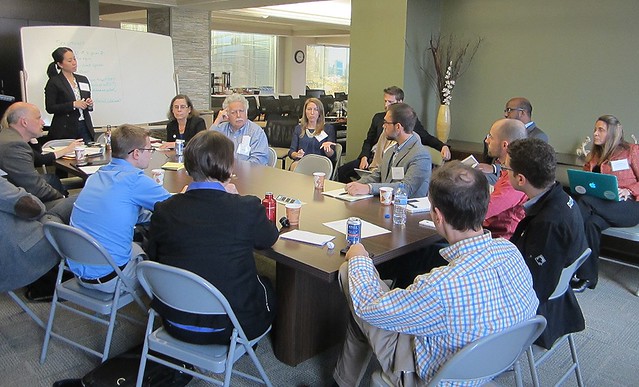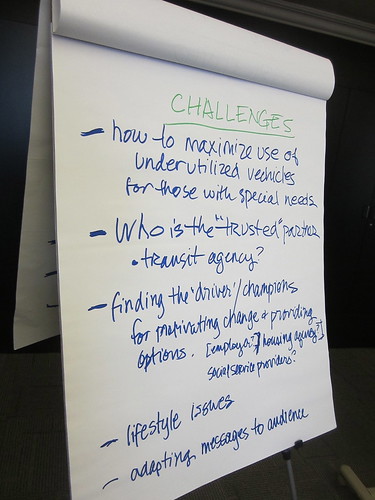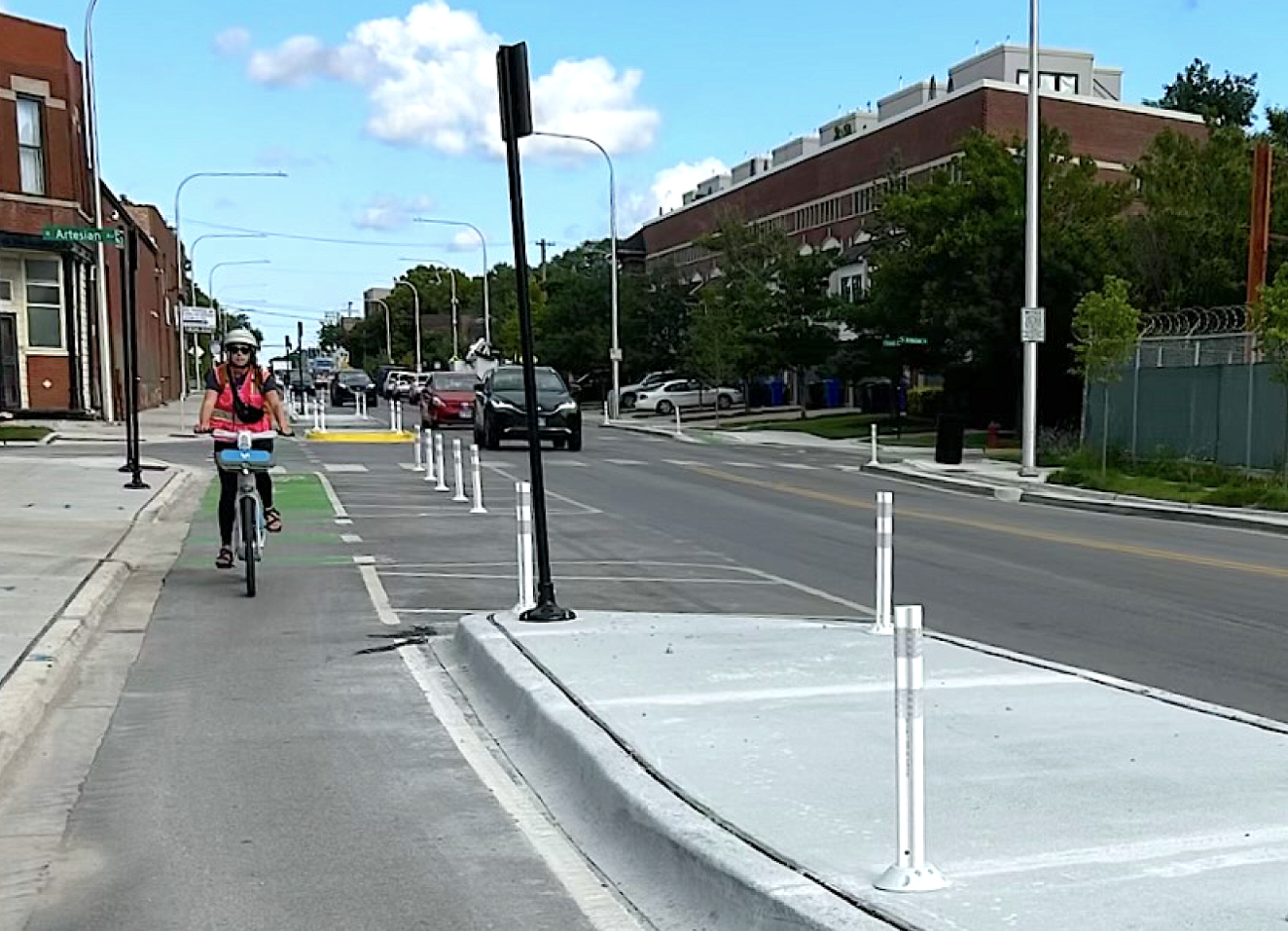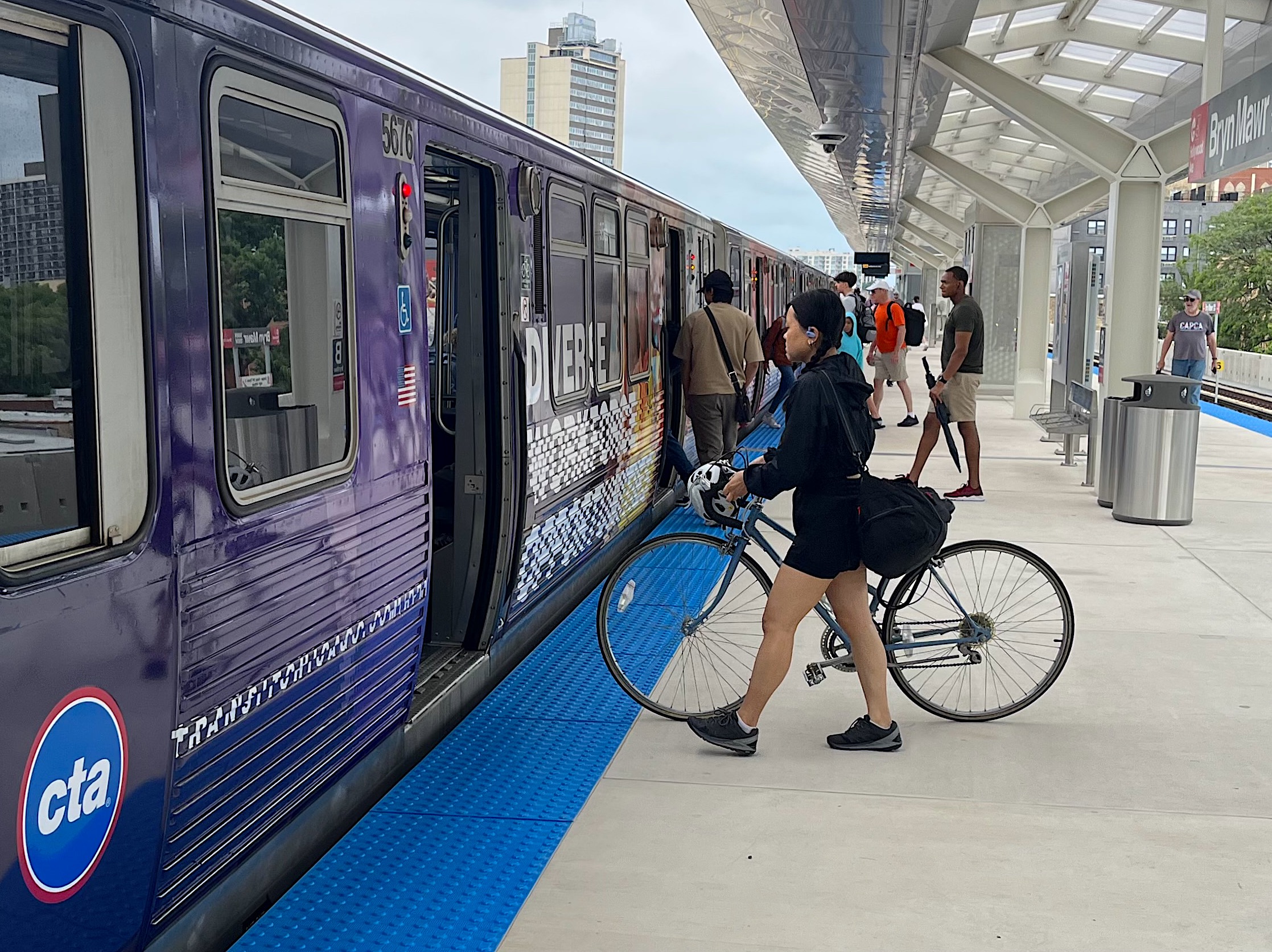Transportation leaders from across the nation convened last week in Chicago to celebrate the launch of the Shared-Use Mobility Center, a nonprofit that will work to maximize the potential of car-sharing, ride-sharing, and bike-sharing services to benefit the public. The new organization will promote collaboration between the different services, and encourage cooperation between the growing industry and city governments, transit agencies, and community groups.
The shared-mobility industry has the potential to have a major positive impact on air quality, congestion, and public health, and to increase access to jobs, education, and healthcare, said Sharon Feigon, SUMC’s executive director. She formerly led I-GO CarSharing, the service that was run by Chicago’s nonprofit Center for Neighborhood Technology.
After I-GO was sold to Enterprise CarShare, the CNT board decided to use part of the proceeds to launch SUMC. “The board spent about a year trying to figure out what’s the new thing that can carry out the mission of I-GO, of making it possible to live well without owning a car,” Feigon said. Founding partners also include TransitCenter and the Transportation Sustainability Research Center at the University of California, Berkeley.
As part of the kickoff, SUMC hosted a workshop at Roosevelt University to discuss current obstacles, and opportunities, for expanding the reach of shared-use mobility services. Panelists included representatives from the transportation startups Lyft, RideScout, car2go; Karen Weigert, Chicago’s chief sustainability officer; Tim Papandreou from San Francisco’s Municipal Transportation Agency; and Michael Bolton, deputy director of Pace. Also participating were reps from Zipcar, Uber, Divvy, B-cycle, Enterprise, the CTA, Metra, Amtrak, and the state of Illinois.
One of the more noteworthy takeaways from the panel came from Pace’s Bolton, who discussed the possibility of enabling Ventra customers to use the card for services like Lyft and Uber. This could allow users to take advantage of the money-saving federal transit benefit when using ride-share.
The workshop ended with breakout sessions on street space, technology, and service to diverse communities. During the street space discussion, CNT president Scott Bernstein argued that one of the best things for the shared-used mobility industry in Chicago would be a thorough study of how car parking spaces are used here, as CNT has conducted in San Francisco, Seattle, and Washington, D.C. “That way, we’d know what the asset is that we’re trying to make more efficient use of, instead of just assuming that we’ll grow it fast enough to make a difference,” he said.
The parking studies found that, in the central areas of the three cities, there were about 40 percent more parking spaces that were actually needed. “Now this is being used by very courageous public officials, who were getting screamed at, to try to push for a reduction in parking standards, and to implement some of the innovations that are out there,” Bernstein said.
He added that the shared-use mobility industry could work together with real estate developers who are interested in reducing parking requirements at new developments. Bernstein noted that even in Evanston, one of Chicago’s most progressive suburbs, there has been a requirement for two parking spaces per dwelling. He said that a developer wants to build a nine-story, 100-unit building near CTA and Metra stations on Main Street, and offered to put in 90 bike spaces and four car-share spaces, in exchange for a break in the parking requirement. “The city didn’t know what to do, to put it bluntly.”
CNT found that nearby renters only owned 0.7 cars per household. “It didn’t make a ringing case for the need for two cars per household,” Bernstein said. “The city wanted to bring it down to something like 1.5. We’re saying, you don’t need more than one.”
Also during the street space discussion, Active Transportation Alliance’s Ron Burke noted that roughly one fourth of Chicago’s landmass, and 70 to 80 percent of its open space, is public right-of-way. Unfortunately, most people view that space as car right-of-way.
“It’s a really valuable resource, and one of the challenges we face is that resource is being used so poorly,” Burke said. “So many of our trips are made in single-occupancy vehicles, where 80 percent of the seats aren’t being used. Let’s use that public right-of-way more efficiently. There’s only one seat on my bike, and I guarantee it is filled.”
He emphasized the need to create incentives and disincentives to ensure that right-of-way is used efficiently, such as dedicated bus lanes, bike lanes, carpool lanes, and reserved parking for car-share vehicles. “Chicago is way behind the times when it comes to carpool lanes and dedicated bus lanes,” Burke said. “Transportation Management Agencies -- we don’t have them. We know how to use these things. We see them happening in cities as mainstream as Pittsburgh, and yet Chicago can’t pull it off.”
However, Burke noted that Chicago is about to get its first truly dedicated downtown bus lanes with the Central Loop bus rapid transit project, and the city has been installing dozens of miles of buffered and protected bike lanes. “So those are some of the solutions,” he said. “Hell, I would love to see regular city streets become carpool-only, at least at certain times of day, with video enforcement. Because we’ve got to get serious about using public space efficiently.”







